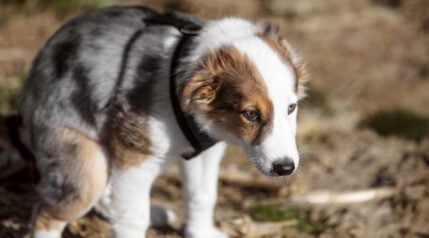You will have noticed in many of our articles that socialization is crucial for all dogs, whatever the breed.
Let’s learn everything we need to know about socializing your puppy. Also, we take a look at how to socialize an older animal so that you’ll know what to do if you take on a dog from a rescue shelter.
So, what is socialization, and how do you socialize your dog or puppy? Let’s find out!
Overview
Socialization involves acclimatizing your dog or puppy to other animals and people so that he behaves well in their company. Also, it’s essential to train your dog to be relaxed and confident in many different situations so that he’s a pleasure to be around for you and other people too.
If a dog is not properly socialized, he may become agitated when in the company of other people and their pets. Your dog may be afraid of unfamiliar situations, which could lead to him becoming aggressive or very nervous.
Unsocialized Dogs
If you take on a dog from a rescue center or shelter, he may never have been properly socialized. Here are some clues that your dog requires socialization urgently:
- The dog is afraid of other people and animals.
- The dog is aggressive around people, dogs, and other pets.
- The dog backs up, and his hackles rise when a person or another dog approaches him.
- The dog is unsettled and nervous about loud noises and unfamiliar sights when out on walks.
- The dog is very shy of people and other dogs.
- The dog becomes so overexcited around other pets and people that he causes them to be anxious.
So, how do you socialize an adult dog?
Socializing Adults
Puppies are relatively easy to socialize. It’s just a case of exposing the puppy to as many new experiences as possible. At a young age, puppies quickly absorb all these new experiences, which quickly become accepted by the puppy as normal.
However, socializing an adult dog from an uncertain background can be a tough challenge. Please take extreme care when socializing an adult dog of a breed that has a reputation for aggression. Unsocialized dogs are unpredictable and may respond aggressively to someone or something that frightens them or that they see as a challenge.
How To Socialize An Adult Dog Safely
Always use a muzzle, especially with large breeds. A muzzle will prevent accidents and injury should the dog become aggressive. Also, if your dog is muzzled, people around you will feel more relaxed, and consequently, so will you. If you’re relaxed, your dog will pick up that vibe, and most likely, he’ll chill out too.
Be sure to take your dog on lots of walks around your neighborhood. Walking will show your dog lots of new things, including smells, sights, and sounds your pet may not have encountered before. The chance to get rid of excess energy will also help to relax your dog.
If your dog pulls on his leash or barks at other dogs and people, don’t tell him off. Instead, try distracting him with treats or a toy. Sometimes, simply turning around and walking in the opposite direction can be all it takes to calm a fractious pup.
In the early days of your dog’s socialization, it’s not a good idea to take him inside the dog park. All those other dogs barking and running around could blow your pet’s mind! So, instead, make it easy on your dog by walking with him around the edge of the park so that he can see the other dogs from a distance.
If your pup remains calm, allow him to approach the fence so that he can sniff the other dogs through the fence. If your dog remains friendly and relaxed, reward him with a treat. However, if your pet becomes aggressive or nervous, move away from the fence and try again tomorrow.
Once you are confident that your dog is not aggressive or frightened when close to the dog park, you can take him inside. Never leave your dog leashed inside the dog park. That can cause problems if your pet feels trapped and unable to run away from the other dogs if he wants to. For your first off-leash visit, choose a quiet time when the park has few other dogs using it.
When introducing your new dog to people he doesn’t know, keep him on a leash. Ask folk to approach the dog slowly and offer him a treat or his favorite toy. Be sure to keep the tone of voice that you use calm, friendly, and encouraging. If your dog appears nervous or cowers away, have everyone retreat and allow him space and time. Perhaps try again on another day when your dog is more relaxed.
Always keep calm. The very worst thing you can do if your dog gets upset or aggressive is to react to his behavior, as that will only make him more anxious. By staying cool and calm, you’re showing your dog that there’s nothing to be frightened of or worried about.
Always take your time. Sometimes, the process can take many months, but it will be worth the effort in the end. Make sure that every experience your dog has is positive. Eventually, your pet will become a happy, well-socialized dog.
If you find that you are struggling to make progress, always seek the advice of a professional dog trainer and talk to your vet too.
Socializing Puppies
Between three and 12 weeks old, your puppy should be exposed to as many people, places, and other animals as possible. It’s the experiences that your puppy has during his first year that can profoundly influence his future character and temperament. And a socialized puppy will grow into a friendly, happy adult dog who is a pleasure to be around and will be welcome anywhere.
Taking your puppy to socialization classes is the best way to get him accustomed to being around other puppies and new people. So, once your pup has been vaccinated and has been given the all-clear by your vet, it’s time to take him to classes.
Also, you should be sure to take your puppy out as much as possible once he’s settled in, being careful not to overwhelm him with too many new experiences in one hit.
Meeting People
An essential item on your socialization agenda should be meeting other people, including children. The more people your puppy meets, the more confident and sociable he will be. Try hosting puppy play-dates at your home when your friends bring their dogs around. That will teach your puppy not to become nervous when a strange dog enters his home.
Meeting kids is an essential socialization experience for puppies. Your pup should get to meet as many young children as possible while he’s still a baby himself. Kids behave differently to adults, so if your puppy isn’t used to them while he’s young, he could be frightened or worried by boisterous youngsters later in his life.
It’s also a great idea to introduce your puppy to local tradespeople who may be working in your area and to regular callers such as your mailman. If your puppy gets to know folk like this early in his life, he’s much less likely to see them as a threat when he’s older.
Approaching Your Pup
When people approach your puppy, it’s essential that they don’t bend over him, as that could be very frightening for a tiny pup. Also, don’t allow people to pick the puppy up and cuddle him. That could be a very scary experience for a young puppy, especially if he’s shy. Always allow your puppy to approach other people, not the other way around.
Watch for signs of anxiety in your puppy, such as avoiding eye contact, backing away, or clamping his tail to his backside. A happy puppy will always stand upright, probably with their tail wagging!
Try not to use food when you introduce your puppy to new people, as he could learn to associate people with food and may begin to scrounge or jump up.
Other Dogs
The best way for a puppy to learn to interact with other dogs is to spend time with them. It’s imperative for your puppy to be introduced carefully to lots of adult dogs and other puppies too. It’s essential that all the dogs your pup meets are friendly and non-aggressive. Remember that a bad experience at an early age will shape your pup’s attitude toward other dogs for the rest of his life.
It can be helpful to crouch down beside your pup when he’s playing with a larger dog so that he has somewhere safe to hide if things get too rough.
Other Animals
As well as meeting other dogs and puppies, it’s crucial that your puppy gets to meet other animals too, especially if you live somewhere your pup is likely to meet cats, horses, and other livestock. The most important thing is that your puppy doesn’t learn to chase other animals.
It’s only natural that your puppy will get excited the first time he sees a horse galloping in a field or a cat sprinting away across your backyard. So, distract your puppy with a treat and perhaps create some distance between him and the source of excitement.
Shy Dogs
Not every puppy is outgoing and keen to check out new experiences. Some breeds are naturally shy and quiet. Don’t try to force a shy puppy into a situation that he may find stressful. Instead, to begin with, let a reclusive puppy watch the world from a safe distance. Once he’s relaxed, you can gradually introduce him to new experiences from a closer perspective.
Always allow a shy puppy to approach strangers, never the other way around. Let the puppy sniff and touch the person first and make all the first moves. When the puppy is relaxed and more confident, he can be stroked and petted.
Vet Visits
Choosing the right veterinary practice for your puppy is very important. You should be able to visit the practice a few times with your puppy so that he gets to know the nurses and reception staff. These early social visits are vital if your puppy is to feel relaxed and confident when he has to go to the vet for routine vaccinations and health checks and if he’s ever sick or injured when he’s older.
Here are a few tips on how to prepare your puppy for veterinary visits:
- Choose a clinic where you are welcome to bring your puppy for social visits.
- You should practice handling your puppy at home so that he’s comfortable and confident when he has to go to the vet for treatment for the first time. For example, touch his paws, look inside his mouth, etc.
- Every dog has the potential to bite when he’s afraid or in pain. It is, therefore, a good idea to muzzle-train your puppy. You may never need to use a muzzle on your pup for vet visits, but if he’s comfortable wearing one, it will make life much easier for everyone should the need ever arise.
Final Thoughts
Socializing your dog or puppy is essential if you want your pet to develop into a well-behaved, well-adjusted animal who is welcome in any environment. Puppies should start at a very early age, as soon as they have been vaccinated.
Older dogs typically take longer to socialize, and you will need to proceed slowly and patiently. If you have never worked with a mature dog before, it can be a good idea to ask your vet for advice or to take your dog to a professional dog trainer or behavioral specialist to be sure that you do the job right.





